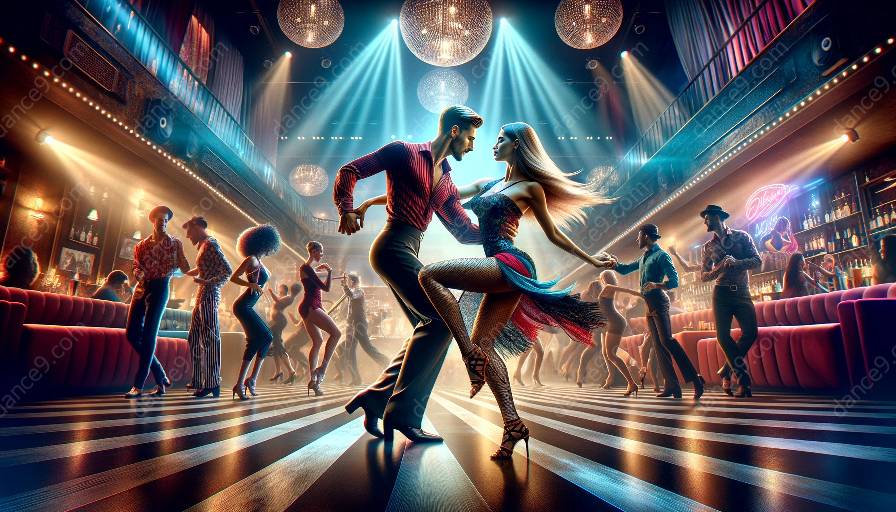Salsa dance is a vibrant and dynamic form of social expression that has garnered immense popularity across the globe. It's an art form that intersects both cultural heritage and modern influences, and within the world of salsa dance, the distinctions between social and competitive dance styles are worth exploring.
When engaging with the intricacies of salsa, understanding the unique characteristics and stylistic differences between social and competitive salsa dancing is crucial. By delving into these differences, dancers can elevate their understanding of the art and possibly find new approaches to improving their skills and techniques.
Social Salsa Dance
Social salsa dance, also known as club or street salsa, is rooted in the traditions of Latin and Afro-Caribbean culture. It is a fluid and spontaneous form of dance that emphasizes connection, improvisation, and musicality. Social salsa is less structured than its competitive counterpart, focusing on the enjoyment of movement, connection with partners, and the communal experience of dancing with others. In a social setting, there is often a strong emphasis on leading and following, with partners interacting in a more casual and organic manner.
In social salsa, the primary goal is to evoke the joy and passion inherent in the music, thus creating a lively and celebratory atmosphere. The movements are often more interpretive and free-flowing, allowing for a greater degree of personal expression and creativity in one's dancing. This style is prevalent in social gatherings, salsa clubs, and casual dance meet-ups.
Competitive Salsa Dance
Competitive salsa dance, on the other hand, is a more structured and choreographed form of salsa, often tailored for performance and competition. It involves intricate patterns, synchronized movements, and a strong focus on technique, precision, and showmanship. Competitive salsa dancers train rigorously to perfect their routines, often showcasing complex footwork, spins, and body movements with remarkable skill and agility.
Competitive salsa often takes place in a competitive environment, where couples or teams vie for top honors based on technical execution, presentation, and style. Judges assess the dancers based on their ability to adhere to predetermined choreography, execute challenging moves flawlessly, and convey a captivating stage presence. These competitions, whether regional, national, or international, showcase the grace, athleticism, and dedication of the participants.
Contrasting Characteristics
The differences between social and competitive salsa dance are fundamentally rooted in their objectives and contexts. Social salsa is about connection, spontaneity, and expression, while competitive salsa emphasizes precision, technique, and performance. The social aspect promotes interaction and enjoyment among dancers, fostering a sense of community and inclusivity, whereas competition encourages a display of skill and artistry for evaluation and recognition.
It's important to note that these distinctions are not absolute, and many dancers enjoy and appreciate both styles. Participating in social salsa can inform and enrich one's competitive dancing, and vice versa. Furthermore, these differences can be incorporated into salsa dance classes to provide students with a comprehensive understanding of the art form, allowing them to embrace the diversity of salsa and develop skills that are adaptable to various contexts.
Integrating Both Styles in Dance Classes
For salsa dance instructors, incorporating the elements of social and competitive salsa can offer a well-rounded educational experience for their students. By exposing dancers to a range of styles and techniques, instructors can help them cultivate versatility, adaptability, and a deeper appreciation for salsa as a multifaceted art form.
Integrating social salsa into classes provides an avenue for students to explore the joy of connection, improvisation, and personal expression. Emphasis can be placed on the fundamental principles of leading and following, musical interpretation, and the development of a strong connection with partners. These elements not only enhance one's social dancing abilities but also contribute to the development of essential skills for competitive salsa.
On the other hand, incorporating elements of competitive salsa in classes can help students refine their technical proficiency, precision, and performance skills. By learning choreographed routines, intricate footwork patterns, and stylized movements, students can deepen their understanding of salsa as a performance art and develop the discipline necessary for competitive endeavors.
Ultimately, a balanced and inclusive approach to salsa dance instruction can empower students to discover their strengths, address their weaknesses, and embrace the beauty of both social and competitive salsa dancing.













































































